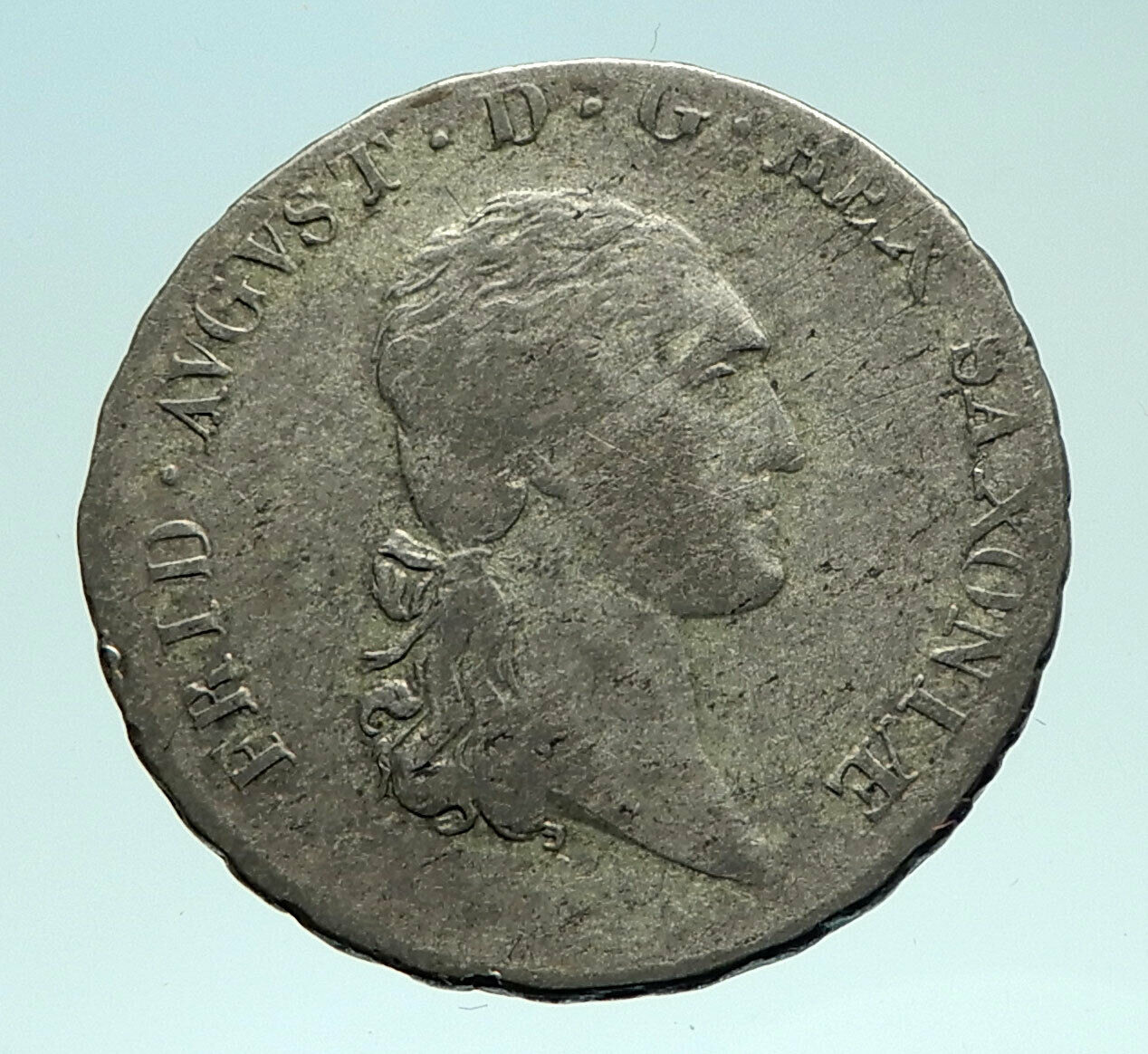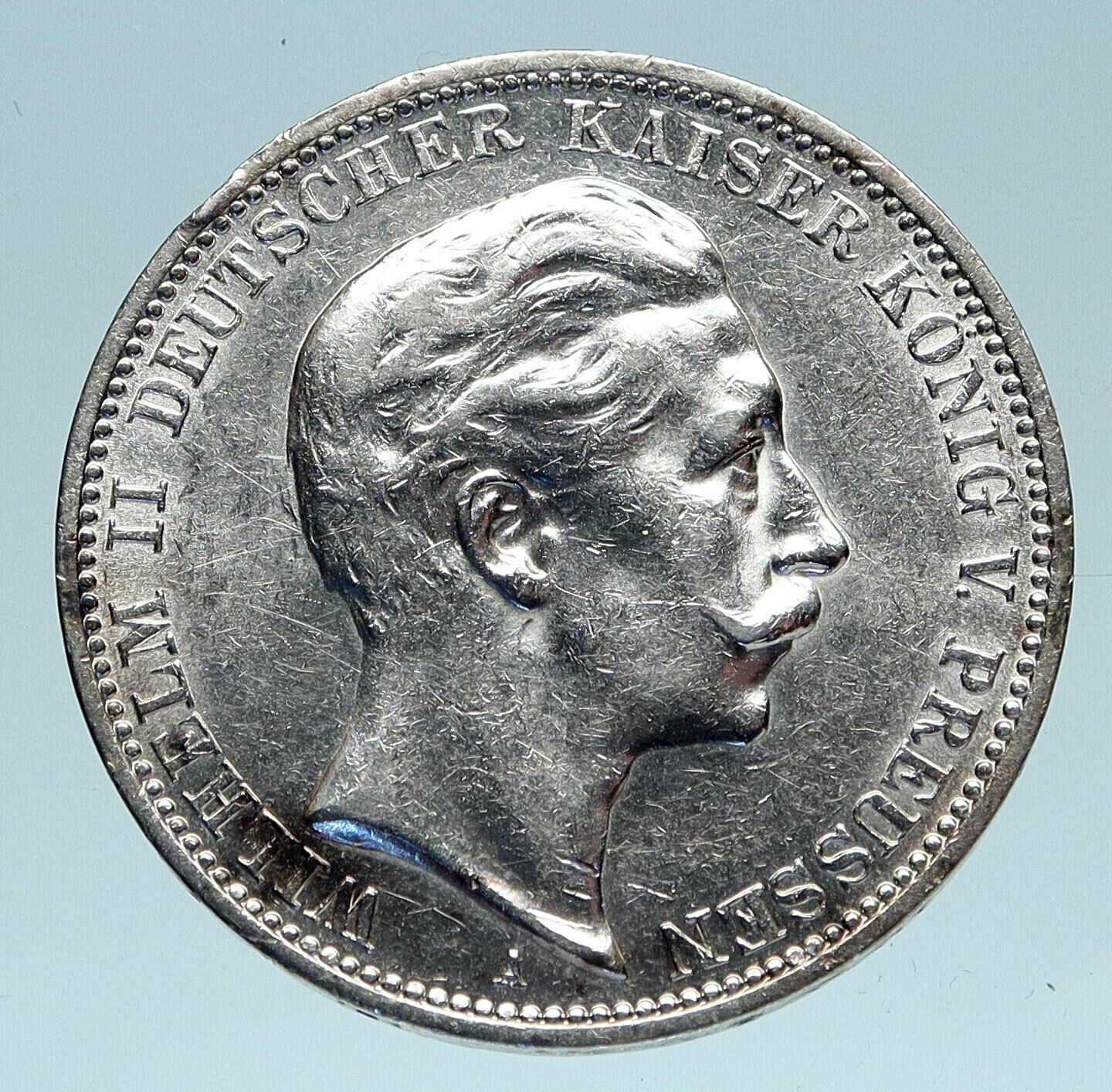|
Germany – German States.
Electorate of Bavaria
Maximilian II – King: 20 March 1848 – 10
March 1864
Commemorates Restoration of the Madonna Column in Munich
1855 Silver 2 Gulden 36mm (21.21 grams) 0.900 Silver (0.3067 oz. ASW)
Reference: KM# 848 | Engraver: Carl Friedrich Voigt
Certification: NGC
AU DETAILS 2863704-014
MAXIMILIAN II
KŒNIG V. BAYERN C.VOIGT, Restoration of Madonna Column in Munich Obverse
ZUR
ERINNERUNG AN DIE WIEDERHERSTELLUNG DER MARIENSÄULE IN MÜNCHEN 1855 PATRONA
BAVARIÆ, Crowned Madonna standing with child.
You are bidding on the exact item pictured, provided with a Certificate of
Authenticity and Lifetime Guarantee of Authenticity.
 Maximilian Maximilian
II (28 November 1811 – 10 March 1864) reigned as King of Bavaria
between 1848 and 1864.
Unlike his father, King Ludwig I, “King Max”
was very popular and took a greater interest in the business of Government
than in personal extravagance. Ascending the throne during the German
Revolution of 1848, King Maximilian restored stability in his kingdom. The
rest of his reign was characterized by attempts to maintain Bavarian
independence during the wars of German Unification and to transform his
capital city of Munich into a cultural and educational city.
When the
abdication of Ludwig I (20 March 1848) called him suddenly to the throne,
his choice of ministers promised a liberal regime.
Domestic policy
In 1849 an uprising in the Bavarian Palatinate was broken down with the
support of the Prussian Army.
Though from 1850 onwards his government
tended in the direction of absolute monarchy, King Maximilian steered a
moderate course between the extremes of Classical Liberalism,
Prussian-inspired Pan-Germanism, and the so-called “Ultramontanes”.
In
his attempts to transform Bavaria into a center of culture, education, and
the arts, he enraged conservative Catholics and Protestants by inviting a
number of celebrated men of learning (e.g. Geibel, Liebig and Sybel) to
Munich, regardless of their religious views.
Devoted to his family and
his people, the King also financed studies of the art, costumes, dialects,
and customs of the Bavarian peasantry. This was done in order to promote a
separate national identity against Prussian-inspired Pan-Germanism.
In
this, the King was assisted by his Personal Private Secretary, Franz Xaver
von Schönwerth. A native of the Oberpfalz region of the Bavarian Kingdom,
Ritter von Schonwerth’s work collecting the folklore and traditions of his
native district won him the admiration of the Brothers Grimm and made him a
model for future folklore collectors.
Foreign policy
Maximilian II responded also to the demands of the people for a united
German state, by attending the Frankfurt Assembly which intended to create
such a state. The progress of the 1848 Revolution, however, gave him pause.
The king strenuously opposed the unionist plans of the Frankfurt Parliament,
refused to recognize the imperial constitution devised by it, and assisted
Austria in restoring the federal diet and in carrying out the federal
execution in Hesse-Kassel and Holstein. In the aftermath of the failure of
the Frankfurt Assembly, Prussia and Austria continued to debate of which
monarchy had the inherent right to rule Germany. The dispute between Austria
and the Electoral Prince of Hesse-Kassel (or Hesse-Cassel) was used by
Austria and its allies (including Bavaria) to promote the isolation of
Prussia in German political affairs. This diplomatic insult almost led to
war when Austria, Bavaria and other allies moved troops through Bavaria
towards Hesse-Kassel in 1850. However, the Prussian army backed down and
accepted the principle of dual leadership. This event was known as the
Punctation of Olmütz but also known as the “Humiliation of Olmütz” by
Prussia. This event solidified the Bavarian kingdom’s alliance with Austria
against Prussia.
 In In
his German policy Maximilian was guided by the desire to maintain the union
of the princes. During the cold warfare between Austria and Prussia, King
Maximilian and his ministers favored the former, which was a policy
enthusiastically supported by both the Catholics and Protestants of the
Bavarian Kingdom. Simultaneously, however, the King and his Ministers also
attempted to preserve Bavaria’s independence by trying to play both powers
against each other. This policy continued under his son, King Ludwig II.
In 1863, however, the King supported the project of reform proposed by
Austria at the Frankfurt Fürstentag.
Attempts by Prussia to reorganize
the loose and un-led German Confederation, were opposed by King Maximilian,
the Emperor Franz Joseph, and other allies in 1863 in Frankfurt. The failure
of these plans, and the attitude of the Austrian Court towards the
Confederation and the Schleswig-Holstein Question, disillusioned King
Maximilian. The last days of his reign were spent attempting to deal with
the new situation created by the outbreak of the war with Denmark.
Later life
In the summers of 1849 and 1855, King Maximilian travelled
his kingdom. Between 24 June and 27 July 1858, he undertook a journey on
foot through his country, which began in Lindau. However, because of
frequent rain he repeatedly had to be carried physically.
In
government policy, the King repeatedly requested the advice of his ministers
and scholarly experts before making a decision, which led to long delays. In
addition, King Maximilian often traveled to Italy and Greece, which also led
to long delays.
After a brief and unexpected illness, King Maximilian
died at Munich on 10 March 1864. He is buried in the Theatinerkirche there.
 A A
Madonna is a representation of Mary, either alone or with her child
Jesus. These images are central icons for both the Catholic and Orthodox
churches. The word is from Italian ma donna, meaning “my lady”. The
Madonna and Child type is very prevalent in Christian iconography,
divided into many traditional subtypes especially in Eastern Orthodox
iconography, often known after the location of a notable icon of the type,
such as the Theotokos of Vladimir, Agiosoritissa,
Blachernitissa, etc., or descriptive of the depicted posture, as in
Hodegetria, Eleusa, etc.
The term Madonna in the
sense of “picture or statue of the Virgin Mary” enters English usage in the
17th century, primarily in reference to works of the Italian Renaissance. In
an Eastern Orthodox context, such images are typically known as Theotokos.
“Madonna” may be generally used of representations of Mary, with or without
the infant Jesus, is the focus and central figure of the image, possibly
flanked or surrounded by angels or saints. Other types of Marian imagery
have a narrative context, depicting scenes from the Life of the Virgin,
e.g. the Annunciation to Mary, are not typically called “Madonna”.
The earliest depictions of Mary date still to Early Christianity (2nd to 3rd
centuries), found in the Catacombs of Rome. These are in a narrative
context. The classical “Madonna” or “Theotokos” imagery develops from the
5th century, as Marian devotion rose to great importance after the Council
of Ephesus formally affirmed her status as “Mother of God or Theotokos
(“God-bearer”) in 431. The Theotokos iconography as it developed in
the 6th to 8th century rose to great importance in the high medieval period
(12th to 14th centuries) both in the Eastern Orthodox and in the Latin
spheres. According to a tradition recorded in the 8th century, Marian
iconography goes back to a portrait drawn from life by Luke the Evangelist,
with a number of icons (such as the Panagia Portaitissa) claimed to
either represent this original icon or to be a direct copy of it. In the
Western tradition, depictions of the Madonna were greatly diversified by
Renaissance masters such as Duccio, Leonardo da Vinci, Michelangelo,
Raphael, Giovanni Bellini, Caravaggio and Rubens (and further by certain
modernists, such as Salvador Dal?and Henry Moore) while Eastern Orthodox
iconography adheres more closely to the inherited traditional types.
 Germany, Germany,
officially the Federal Republic of  Germany Germany
is a federal parliamentary republic in western-central Europe. It includes
16 constituent states and covers an area of 357,021 square kilometres
(137,847 sq mi) with a largely temperate seasonal climate. Its capital and
largest city is Berlin. With 81 million inhabitants, Germany is the most
populous member state in the European Union. After the United States, it is
the second most popular migration destination in the world.
Various
Germanic tribes have occupied northern Germany since classical antiquity. A
region named Germania was documented before 100 CE. During the Migration
Period the Germanic tribes expanded southward. Beginning in the 10th
century, German territories formed a central part of the Holy Roman Empire.
During the 16th century, northern German regions became the centre of the
Protestant Reformation.
The rise of Pan-Germanism inside the German
Confederation resulted in the unification of most of the German states in
1871 into the Prussian-dominated German Empire. After World War I and the
German Revolution of 1918-1919, the Empire was replaced by the parliamentary
Weimar Republic. The establishment of the Third Reich in 1933 led to World
War II and the Holocaust. After 1945, Germany split into two states, East
Germany and West Germany. In 1990, the country was reunified.
 In In
the 21st century, Germany is a great power and has the world’s
fourth-largest economy by nominal GDP, as well as the fifth-largest by PPP.
As a global leader in several industrial and technological sectors, it is
both the world’s third-largest exporter and importer of goods. Germany is a
developed country with a very high standard of living sustained by a skilled
and productive society. It upholds a social security and universal health
care system, environmental protection and a tuition free university
education.
Germany was a founding member of the European Union in
1993. It is part of the Schengen Area, and became a co-founder of the
Eurozone in 1999. Germany is a member of the United Nations, NATO, the G8,
the G20, and the OECD. The national military expenditure is the 9th highest
in the world. Known for its rich cultural history, Germany has been
continuously the home of influential artists, philosophers, musicians,
sportsmen, entrepreneurs, scientists and inventors.
|









 Maximilian
Maximilian  In
In  A
A  Germany,
Germany,  Germany
Germany  In
In 




